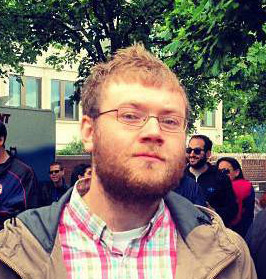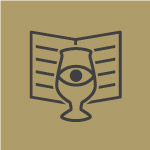Typically, it’s unwise to ascribe rigid characteristics to things that exist by nature in a state of flux. This makes a rather tricky endeavor out of trying to articulate what, exactly, makes perhaps the most celebrated beer on earth so special. Brewed annually by the legendary Cantillon Brewery of Belgium, Zwanze has a name, but it’s a new beer every year. Zwanze is exclusive, but it’s made available to drinkers all over the world. Zwanze is a product, but it’s also one of the most anticipated beer events of the year. Meaning, Zwanze—pronounced “zwahnz,” by the way, not “zwahn-zee”—can’t be characterized as any one thing. And it’s the time of year when Zwanze makes its return.
Matthew Curtis
This Saturday, a carefully curated roster of more than 60 breweries and bars from 18 different countries will together commemorate International Zwanze Day, now in its seventh official year, by tapping this year’s iteration, a Lambic matured for two years and blended with Oolong, a semi-fermented blue-green tea. For some participants, like Monk’s Cafe in Philadelphia, pouring Zwanze is a matter of routine. The bar was one of the very first American businesses to sell the beer, and it still does so every year. For others, like Garage Project in New Zealand, pouring Zwanze now for just the second time, the ceremony is still new.
No matter how long participating businesses have been pouring or where in the world they reside, though, they seem to agree on one basic premise: being able to take part in the day is a very special privilege.
“Zwanze is such a unique and legendary event in the craft beer world,” says Esther Tetreault, co-founder of Boston’s Trillium Brewing, pouring this weekend for the second year. “For most of us, I think, Cantillon has a romantic and rich history that us ‘youngsters’ in the industry can only hope to achieve in time.”
But what makes Zwanze so special and unique in this era of unprecedented access to beer of unprecedented quality? That’s a difficult question to navigate. Ultimately, the answer rests not on what Zwanze is, but what Zwanze represents.
Matthew Curtis
The event itself really emerged in response to the black market. The beer debuted in 2008 as a Lambic with rhubarb, the brewery already comfortably in the hall of fame. It was in 2010, though, with a spontaneously fermented Witbier, when Cantillon first shipped bottled Zwanze to the U.S. It quickly became a hot commodity, with individual bottles being flipped for up to 50 times the original selling price, according to Christian Gregory, general manager at Shelton Brothers, which imports the beer to the U.S. That didn’t sit well with Jean Van Roy, the current owner of the 117-year-old Cantillon. So, to fight back, Shelton Brothers and Cantillon resolved to push bars to not sell bottles to-go, but only for on-site pours. Further, they decided to only sell to bars that would agree to selling the product at a reasonable price.
“Jean has always felt very strongly that he wants to make the beer as accessible as possible. He just looks at it as, you know, it’s beer, it’s something that a normal person should be able to afford,” Gregory says. “And this was the only way anybody could come up with to still put the beer out there, still give people a chance to try it, but fight against that.”
As these selling guidelines and best practices began to take shape, so too did the concept of building an actual event around the beer’s release, an organic response to Van Roy’s anger with secondhand opportunists.
“We kind of thought, ‘Why don’t we just tie the two together? You know, we called it a ‘National Zwanze Day’ in the email and proposed turning it into an ‘International Zwanze Day’ and it just kind of stuck from there,” Gregory adds. “And now I want to say we’re working with three times as many bars [as we were originally]. It’s grown a lot. But it’s still the same concept. I guess that’s pretty much all there is to it.”
Indeed, each subsequent year, Zwanze has flooded further into the U.S., and will be poured at 28 locations this year, up from 10 in 2011. As for how, exactly, Zwanze became the beer, the answer might be fairly simple, albeit somewhat intangible.
“The introduction of each Zwanze vintage is unique. [The] beer world needs more beers that, as Shaun Hill [of Hill Farmstead] would say, ‘achieve singularity,’” says Tom Peters, owner of Monk’s in Philadelphia. “Cantillon does not follow trends. It inspires them. Rob [Tod] and Jason [Perkin] installed a Koelschip at Allagash after visiting Cantillon. Now there must be at least 50 U.S. breweries that use spontaneous fermentation to produce Lambic-ish beer.”
Blake Tyers
Of course, there are plenty of legendary and trendsetting releases one could point to that have, say, achieved singularity. Years after Goose Island sold to Anheuser-Busch InBev and solidified itself as the industry’s poster child for “selling out,” people still wake up before the sun each year on Black Friday to line up to get their hands on the latest version of the iconic Bourbon County Stout. Similarly, release festivities surrounding the likes of Dark Lord from Three Floyds, Hunahpu’s from Cigar City, and Pliny the Younger from Russian River serve as centerpieces in countless beer fans’ calendars. With Zwanze, though, the mania is just different from the others. And that’s not just pontification. These differences are easily identifiable.
Here’s a major one: Zwanze Day itself has given way to entirely new festivals. Jolly Pumpkin of Dexter, Michigan, for instance, began hosting its own Day of Zwanze last year. There, Zwanze may be the headliner, but it’s hardly the only star on the bill. This year, a $100 ticket, proceeds from which will go to charity, will grant drinkers access to a litany of Cantillon beers, Jolly Pumpkin’s artillery, Allagash’s coolship program, as well as beers from Creature Comforts, Fonta Flora, Jackie O’s, Jester King, Lost Abbey, Monkish, Sante Adairius, Tired Hands, Veil, Other Half, and a handful of other stalwarts and stalwarts-in-the-making.
“We want to bring as much of that worldwide event back to our lovely home in Dexter,” says Daniel Ohly, brand manager at Jolly Pumpkin. “While drinking Cantillon, it’s a journey back to Brussels, sitting around an old barrel, drinking delicious Lambic. So we’re thinking about our dear friends in Austin at Jester King, drinking Zwanze and enjoying their wonderful beers. Our homies over at Slow Boat Tavern in Seattle, drinking Zwanze and enjoying the great beers from Holy Mountain. And so on.”
What Gregory, at Shelton, describes as the “transatlantic connection” between the U.S. and Brussels has obviously strengthened and grown over the years. But the event and subsequent anticipation has since spread throughout the world at large as well. It’s a bit different elsewhere, though.
Robby Haesebrouck owns Tribaun, a beer bar in Austria. He says that the country’s craft beer revolution, as it’s so often called, has been slow going. As such, the hype around Zwanze, which he’s proud to pour, is less identifiable.
“It’s like Cantillon who? Zwanze what? So it’s not really anticipated with the locals,” he says. “It’s a high profile event, but you have to attract people from further away.”
To do that, he hopes to “accelerate [the] regional network” by bringing in drinkers from Northern Italy and Munich, which sandwich Austria. Tribaun, too, will be pouring up to 14 other celebrated sour beers to build wider appeal, and has invited a number of breweries in hopes of networking and ultimately advancing the cause of craft beer in Europe.
Blake Tyers
By bringing the event to New Zealand, meanwhile, Zwanze is a largely symbolic effort. Jos Ruffell of Garage Project says his people have a “strong awareness” of Cantillon and Zwanze, but it’s still a “relatively new concept” there.
“Being based in New Zealand, essentially at the bottom of the world, I think to us and the drinkers and fans of craft beer...it means that we have not been forgotten, and that we get a chance to participate in something global which is incredibly exciting and rewarding,” Ruffell says. “For the wider community, it's an important moment to celebrate and appreciate a style and art of brewing that could very nearly have gone extinct. So it's a nice reminder that we need to look back in history, as much as we all need to keep pressing forward with new innovations and traditions.”
Despite the event’s growth, Zwanze is still extremely limited. Cantillon has, in recent years, undergone a sizable expansion, and Gregory expects that will, in a minor way, help Zwanze grow a bit. But this event will likely always be defined by its limitations, as Gregory says each U.S. location will be allotted a single 30-liter keg of the beer. Going forward, the hope is more product will help to fill out the map rather than provide current partners with more juice.
Michael Kiser
“It would be great if we could include a few more territories,” he says. “You could draw circles over a 500-mile radius where we just have huge gaps. We wanted to go to Fonta Flora in North Carolina. That’s a big market for us, it just didn’t work out this year. So we want to get back there next year. It’s not going to be a massive change or huge additions or whatever, but we would like to fill in those gaps.”
Here again is why trying to characterize Zwanze and Zwanze Day can be so difficult. The beer itself gave way to an event quite literally in the service of creating greater access. But given the sheer limitation on volume, the cost of tickets to get through the door in some cases, and even the challenging style of the product itself, Zwanze Day boasts one of the highest inherent barriers to entry in all of beer.
Michael Kiser
Again, this is why it’s prudent to disregard what Zwanze is and instead focus on what it represents. Because that, too, changes year to year. In fact, this year, Van Roy made the beer in collaboration with his son Sylvian, who inspired the decision to blend this year’s beer with tea. A “huge fan of Game of Thrones,” Van Roy’s son also inspired the themed graphics for this year’s entry. And that alone has resonated with at least one participating brewery.
Adds Tetreault, at Trillium: “As a husband and wife team, JC and I feel especially sentimental about this year’s beer. Jean’s tribute to his son have us looking at our kids…[it’s] a reminder of our intention to start Trillium as a family business and the way we want to spend the rest of our lives. JC and I have fingers crossed that our kids will want to be involved with Trillium someday. But ultimately, we’ll celebrate their passions, whatever they might be.”

















